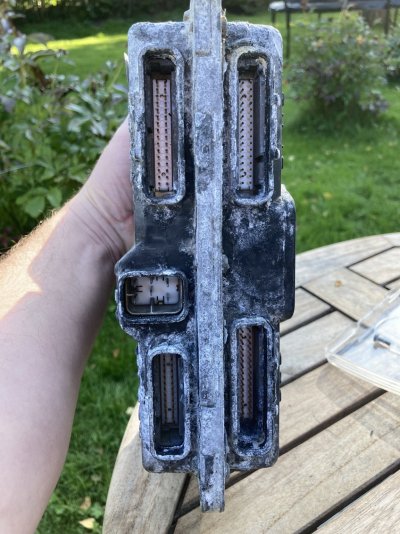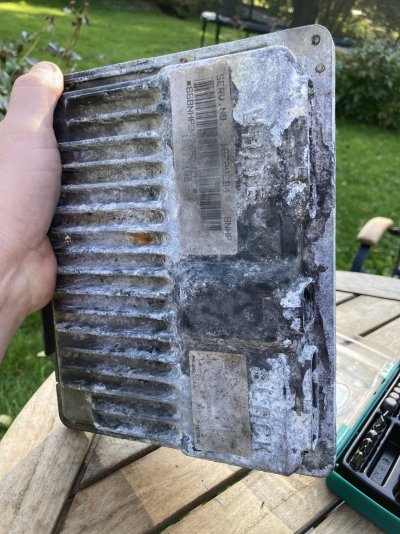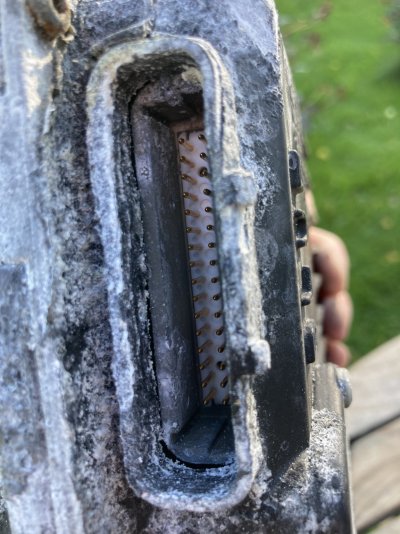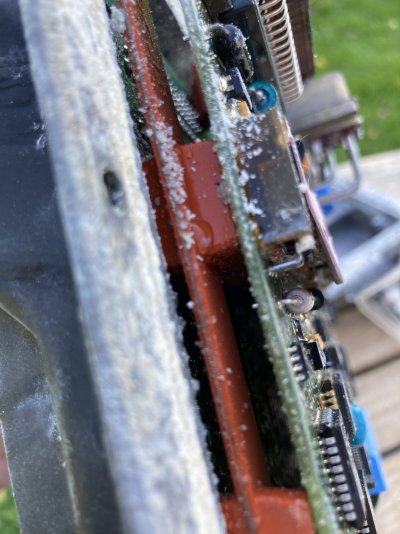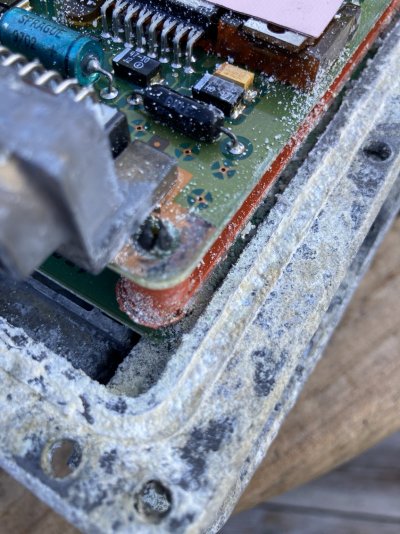So, 1997 GMC Savana 1500.
Problem no 1: Me and the family drove home from our camping vacation and after appr. 4 hours of driving, it started to slam in the second gear and lost the lockup. Since we were on the road and in the middle of nowhere (as you always are when things break down) we limped to the nearest town and checked trouble codes and the oil level. P1870 came up and the oil level was good. Did let the van rest for an hour and we took of again. Hard shifts gone, trouble code gone and lockup was back. Drove it all the way home, roughly 200 miles, with no further issues.
Problem no 2: A couple of weeks after being back, I drove the kids to school and on the way back, CEL came on and it started shuddering a bit. Turned into a parking space, hooked up my scanner and it showed P0131 and P1133. Really strange since both upstream o2 sensors had been replaced prior to the holiday as a preventative thing (no voltage on the sensor either). Turned the engine off, tried to restart, cranks but didn´t start. Hooked the scanner back on but it couldn´t communicate with the PCM. Must have tried 20 or so times but nothing. All of a sudden, it came back to life, showed the same codes as before but started. Drove it home directly.
After that, it sat for maybe a couple of weeks more (didn´t have time do dig into it) until I tried starting it again. Started but ran really rough, wacked the throttle a couple of times but it didn´t really help. The o2 sensor now showed some voltage again but new codes arose instead; P0138, P0300, P0304. And then, again, it lost the connection with the PCM and it wouldn´t start. Tried a couple of times again but nothing. To me, it seemed really strange that an o2 sensor (which was almost new) first stopped working and then started working again while other codes which I had never seen before showed up. Anyway, noticed that the PCM looked very corroded so I unhooked the battery and took the PCM out for a closer look. Not good. Managed to disassemble it and on the inside it was clear that water had made its way in. Lots of small drops on and in between the circuit boards and heavily corroded both inside and out. I´ll attach a few pics so you can see.
I suppose it is also worth mentioning that prior to the start of problem no 2, we had the worst sort of rain/wash out/flood here in 50 years. It rained really heavily during a couple of weeks, so bad it destroyed small roads, peoples driveways etc.
So…I suppose my questions to you guys are as follows:
Do you think that the P1870 code might be related to the PCM issue? If not, what would you suggest as a first action?
I have found some (not a lot) of info online saying that this is fairly common on the Express vans with water damaged PCMs. Anyone heard about this? How would one go about to prevent it in the future?
The PCM seems (and looks) to me to be the source of the other issues. I suppose replacement is the only option. I have looked online and a US company called Flashmasters sells refurbished units (Black box with the same service no) flashed with the correct VIN and software for my rig. Would you say that they are a good company to buy PCM´s from or do you know some other reputable supplier?
I have also read a bit about doing a so called 0411-swap. Are there any benefits of doing this if you intend to keep the rig stock or at least near stock? Is the 0411 better “as is” so to speak? If I where to go for a 0411, where would I be able to buy one which is “turn-key-ready”? I have also read that you have to re-pin the connectors, following a spreadsheet…where can I find the connectors and spreadsheets in that case?
I really appreciate any help you could give on this matter.
Thanks in advance and best regards from (a damp) Sweden
//Johan
Problem no 1: Me and the family drove home from our camping vacation and after appr. 4 hours of driving, it started to slam in the second gear and lost the lockup. Since we were on the road and in the middle of nowhere (as you always are when things break down) we limped to the nearest town and checked trouble codes and the oil level. P1870 came up and the oil level was good. Did let the van rest for an hour and we took of again. Hard shifts gone, trouble code gone and lockup was back. Drove it all the way home, roughly 200 miles, with no further issues.
Problem no 2: A couple of weeks after being back, I drove the kids to school and on the way back, CEL came on and it started shuddering a bit. Turned into a parking space, hooked up my scanner and it showed P0131 and P1133. Really strange since both upstream o2 sensors had been replaced prior to the holiday as a preventative thing (no voltage on the sensor either). Turned the engine off, tried to restart, cranks but didn´t start. Hooked the scanner back on but it couldn´t communicate with the PCM. Must have tried 20 or so times but nothing. All of a sudden, it came back to life, showed the same codes as before but started. Drove it home directly.
After that, it sat for maybe a couple of weeks more (didn´t have time do dig into it) until I tried starting it again. Started but ran really rough, wacked the throttle a couple of times but it didn´t really help. The o2 sensor now showed some voltage again but new codes arose instead; P0138, P0300, P0304. And then, again, it lost the connection with the PCM and it wouldn´t start. Tried a couple of times again but nothing. To me, it seemed really strange that an o2 sensor (which was almost new) first stopped working and then started working again while other codes which I had never seen before showed up. Anyway, noticed that the PCM looked very corroded so I unhooked the battery and took the PCM out for a closer look. Not good. Managed to disassemble it and on the inside it was clear that water had made its way in. Lots of small drops on and in between the circuit boards and heavily corroded both inside and out. I´ll attach a few pics so you can see.
I suppose it is also worth mentioning that prior to the start of problem no 2, we had the worst sort of rain/wash out/flood here in 50 years. It rained really heavily during a couple of weeks, so bad it destroyed small roads, peoples driveways etc.
So…I suppose my questions to you guys are as follows:
Do you think that the P1870 code might be related to the PCM issue? If not, what would you suggest as a first action?
I have found some (not a lot) of info online saying that this is fairly common on the Express vans with water damaged PCMs. Anyone heard about this? How would one go about to prevent it in the future?
The PCM seems (and looks) to me to be the source of the other issues. I suppose replacement is the only option. I have looked online and a US company called Flashmasters sells refurbished units (Black box with the same service no) flashed with the correct VIN and software for my rig. Would you say that they are a good company to buy PCM´s from or do you know some other reputable supplier?
I have also read a bit about doing a so called 0411-swap. Are there any benefits of doing this if you intend to keep the rig stock or at least near stock? Is the 0411 better “as is” so to speak? If I where to go for a 0411, where would I be able to buy one which is “turn-key-ready”? I have also read that you have to re-pin the connectors, following a spreadsheet…where can I find the connectors and spreadsheets in that case?
I really appreciate any help you could give on this matter.
Thanks in advance and best regards from (a damp) Sweden
//Johan


